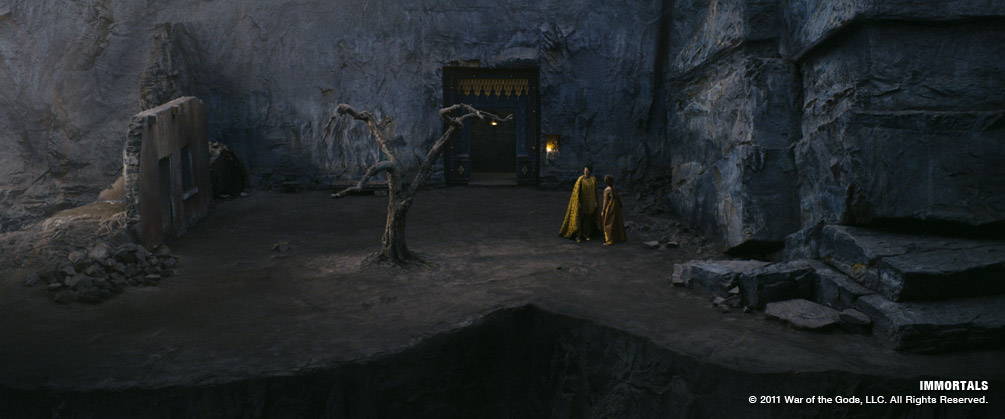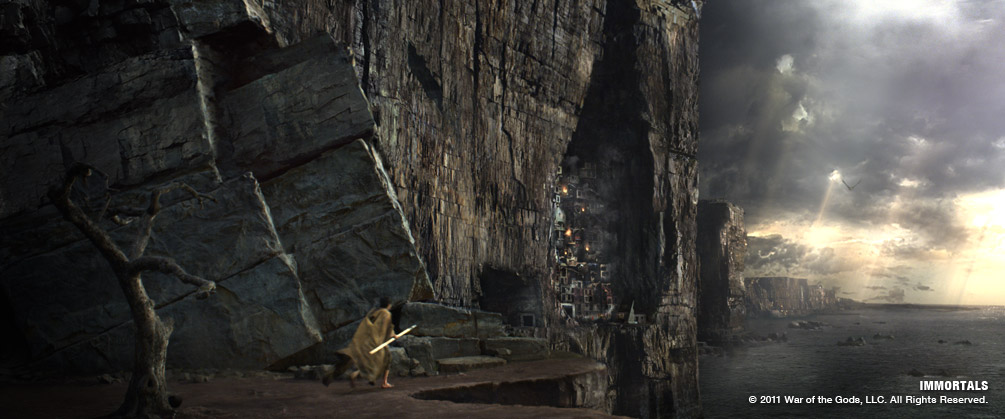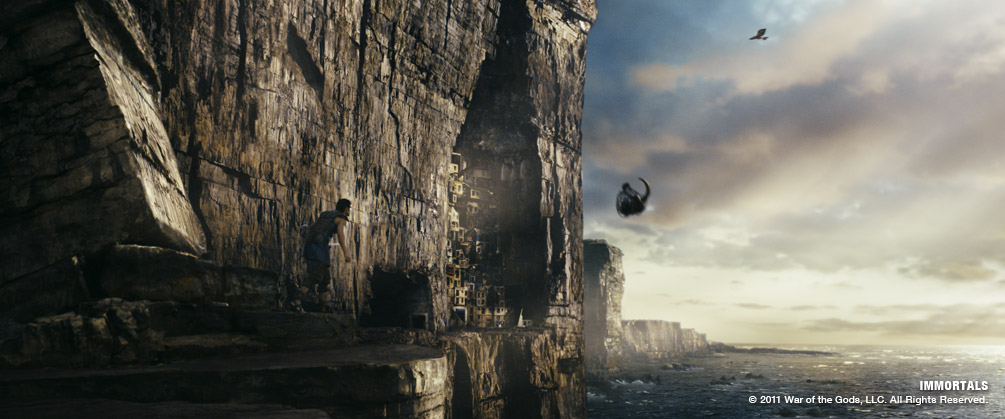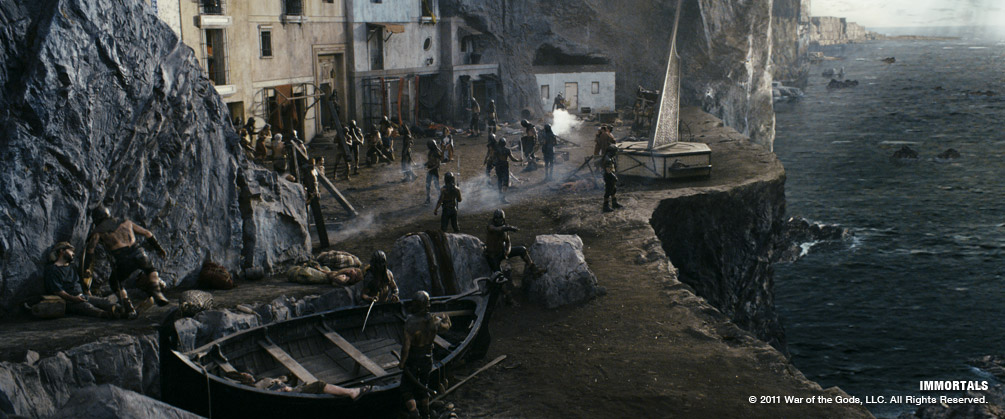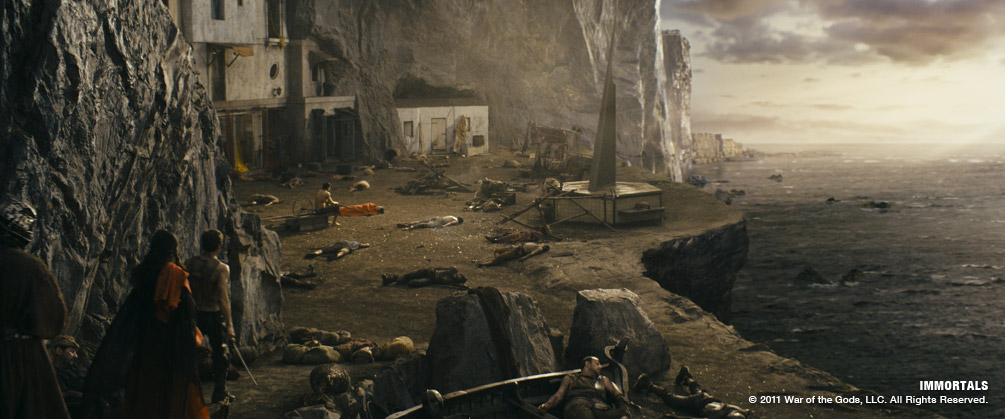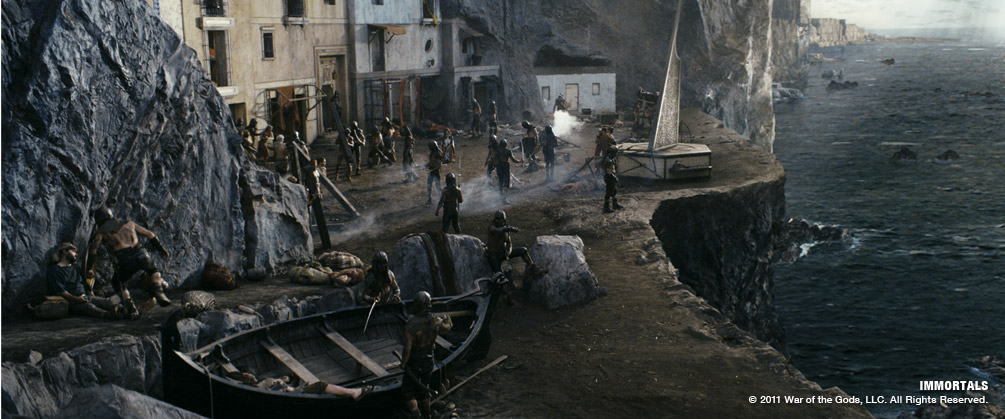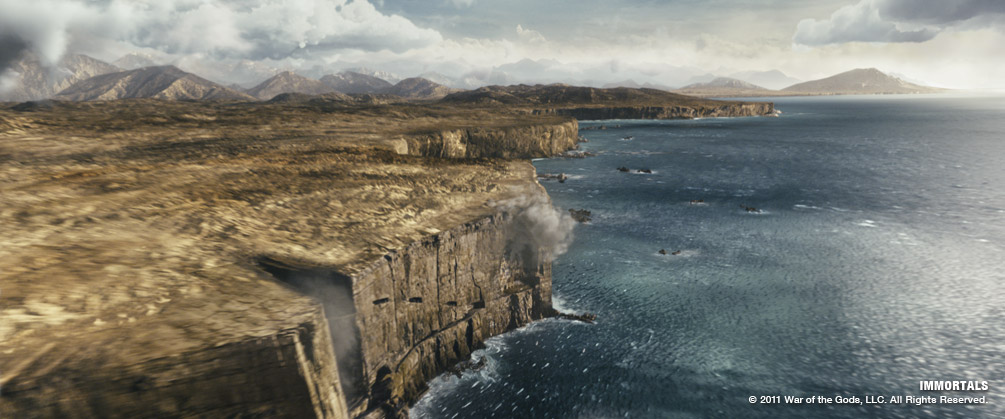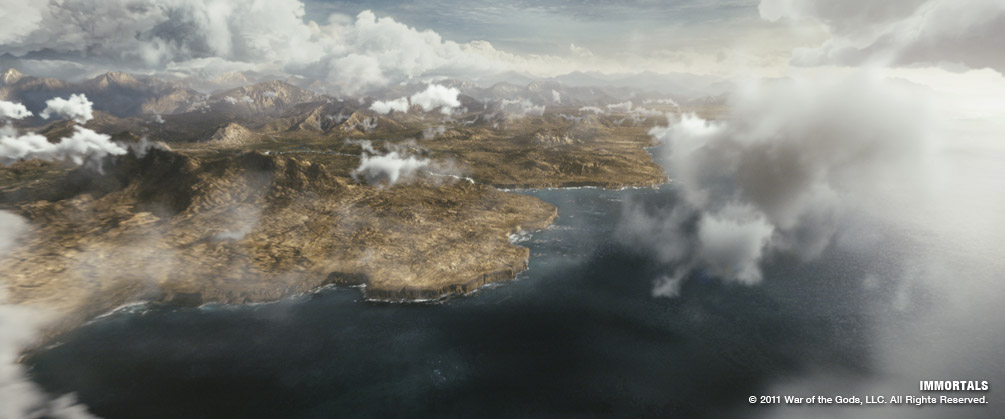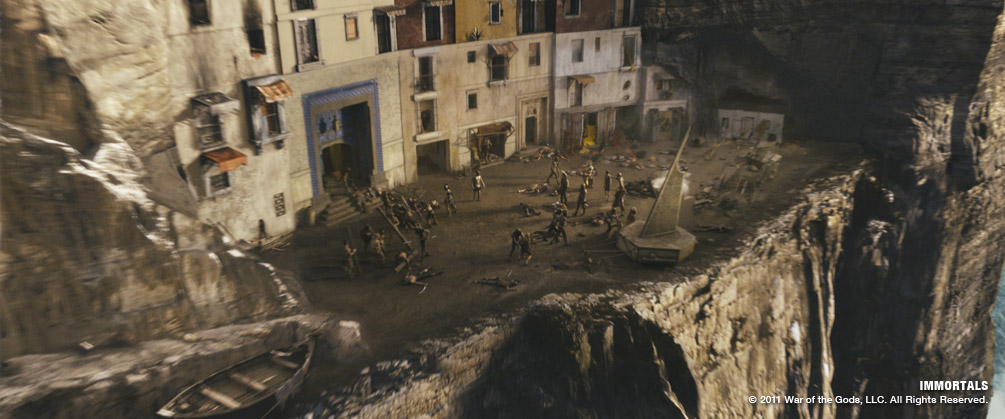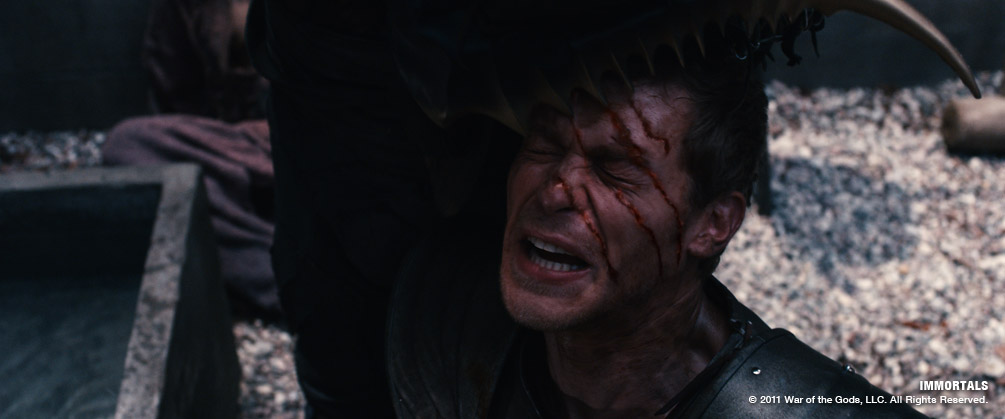Immortals Case Study
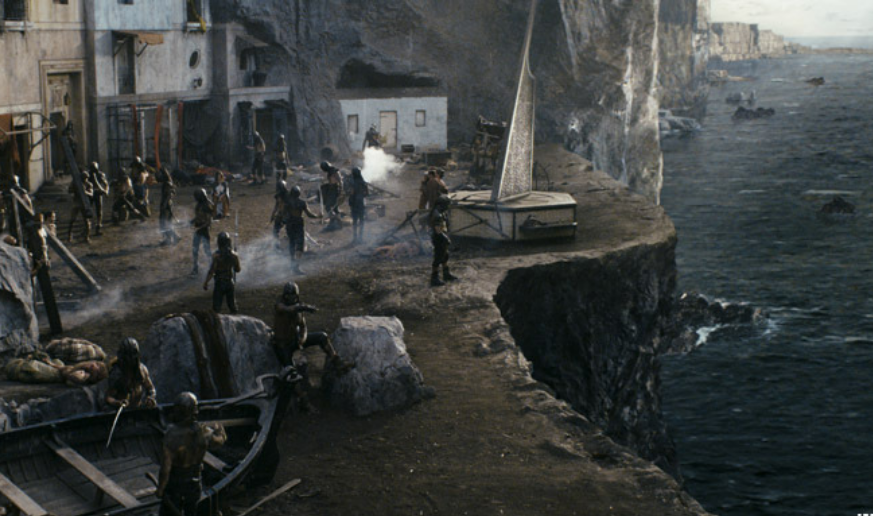
Case Study
Image Engine builds epic environments for Tarsem Singh’s Immortals.
Image Engine provided over 130 visual effects shots for Immortals (2011), the epic mythological tale from the producers of ‘300’, directed by Tarsem Singh (The Fall, The Cell). The film tells the story of Theseus (Henry Cavill), whose destiny is to save his people from the evil King Hyperion (Mickey Rourke) and his bloodthirsty army.
The project represents the largest digital environment build to have taken place at Image Engine to date.
Image Engine was awarded the work on Immortals in the Spring of 2010. Work began with Simon Hughes (Visual Effects Supervisor) providing on-set supervision in Montréal, and entailed well over a year of dedication from the Image Engine crew.
REALIZING THE DIRECTOR’S VISION
Under the direction of Tarsem Singh the film had a uniquely rich and painterly visual style. Image Engine’s crew drew heavily on their artistic capabilities to realize this creative vision within a photo-real digital environment.
“Our central task as a feature film visual effects house is to integrate effects in as seamless a way as possible” said Shawn Walsh (Visual Effects Executive Producer), “which presented a key challenge for us with such a stylized film and took some very careful compositing and color management to achieve.”
In addition, other stylistic challenges involved the long, locked-off camera positions within each shot: “Often our environments could take up to three quarters of the screen in a static position over an extended period of time,” explained Hughes. “We knew from the start that this was a very artistic endeavor that needed to be of a very high standard to hold up to such scrutiny.”
ENVIRONMENTS
The digital environments built by Image Engine included the giant cliff face, which contained the stage sets known as The Village, Tree Bluff and Check Point, which feature throughout the film.
The cliff was a multi-faceted challenge that consumed over 6 months of planning, setup, sculpting, rendering, matte painting and compositing. It towered several hundred meters above sea level and stretched for several kilometers, requiring a huge area of computer generated rock face.
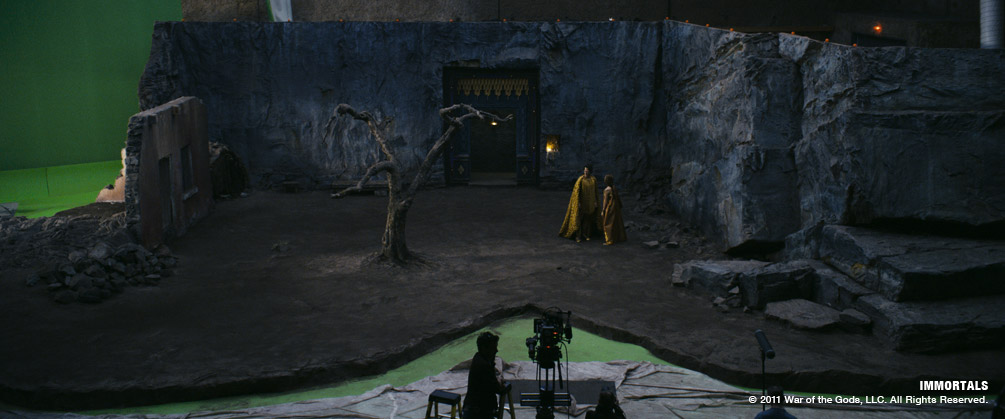
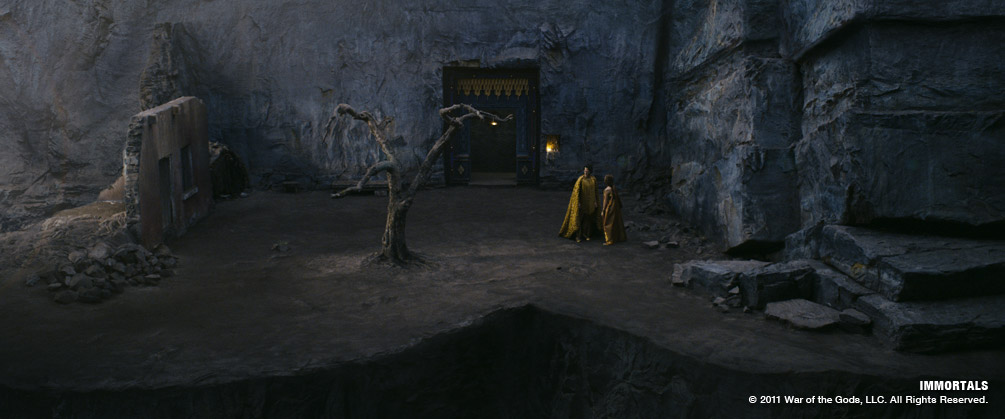
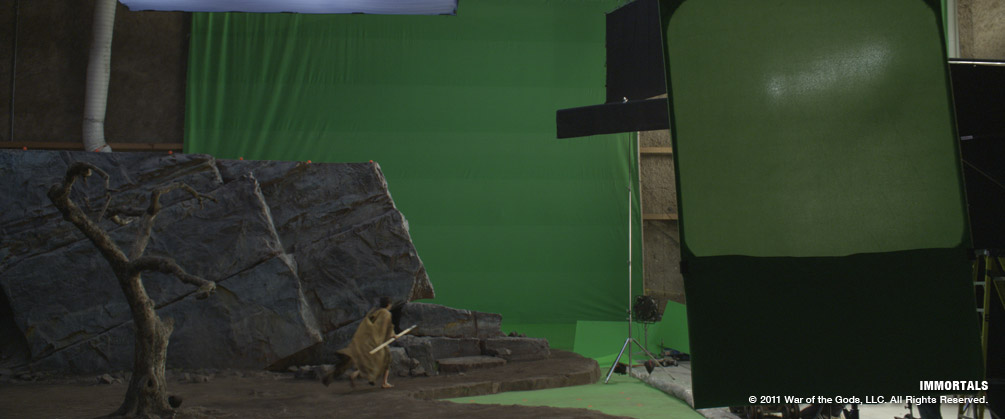
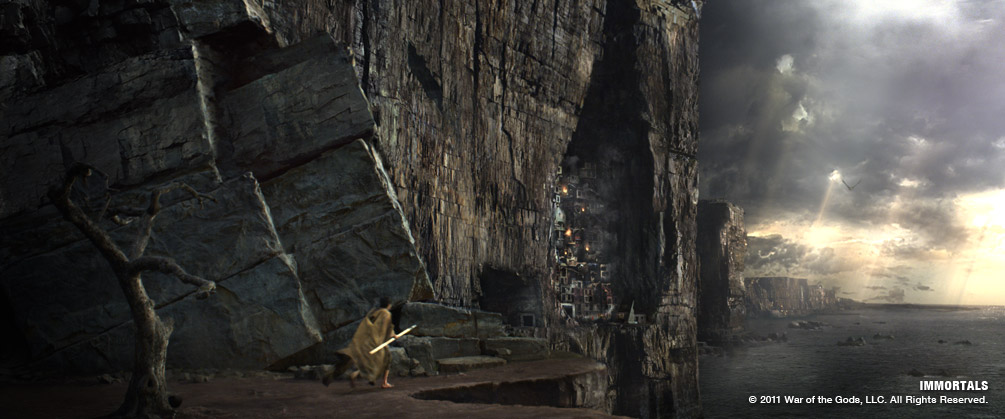
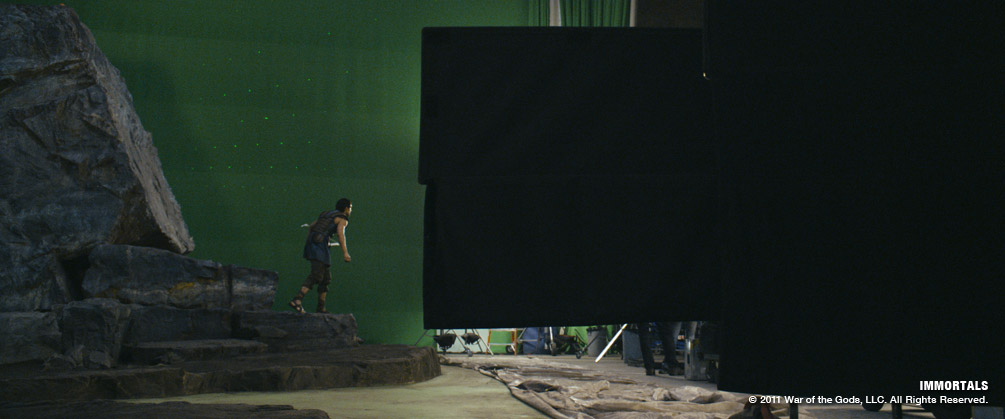
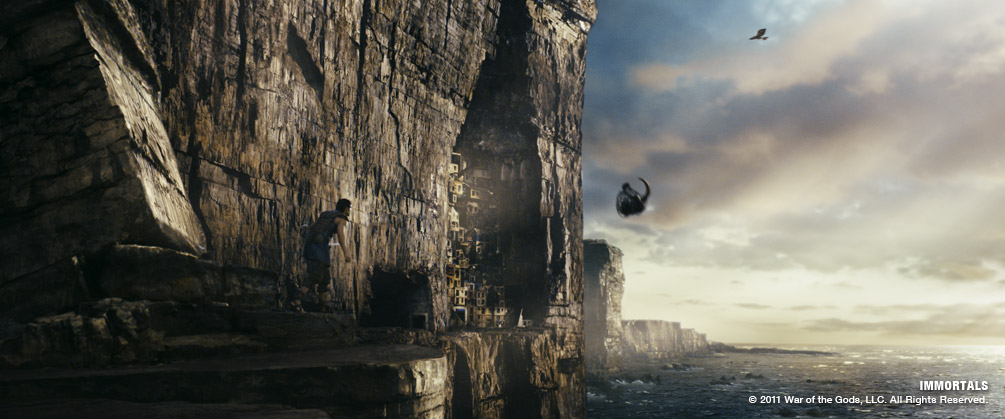
The initial cliff was built entirely in 3D, which allowed the flexibility to cope with an evolving slate of shots; later on down the line projected matte painting was integrated for a more nimble approach to handling last minute changes, and to create more realistic detail in the rock surface for the mid and wide-angle shots.
Gus Yamin, lead CG artist, with Jason Gross as CG Supervisor, initially built the environment in Maya, with Body paint and Photoshop, which was then broken into manageable divisions and taken into Z Brush. From there, Yamin meticulously sculpted rock definition into the sharp geometry.
The village extension, which increased a practical set of 3 storeys to 25, was a very creative task, in which the challenge was to create a sense of life and organic growth, as well as scale. Jacob Miller, the lead artist for the village, built a direct CG extension up from the real village, adding deformations and texture to the blocks to match the actual sets.
There were several generic pieces called the “gak pack” that were built – lights, rails, door frames, curtains etc, which were all derived from the practical set to keep the style the same.
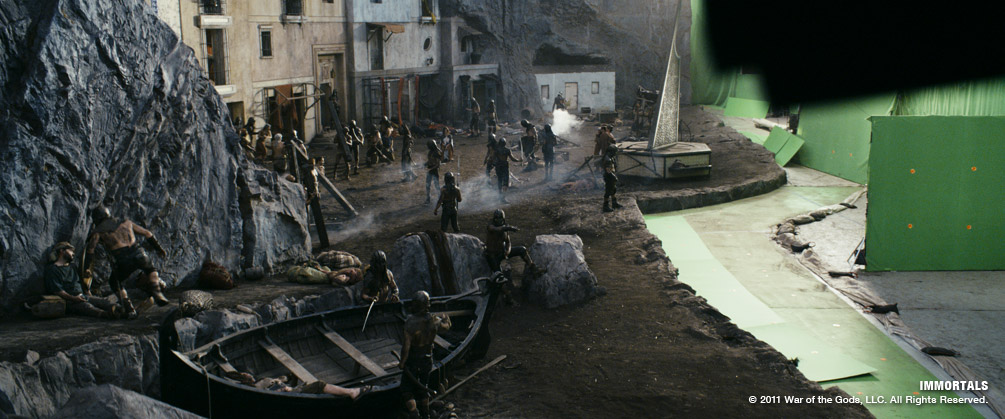
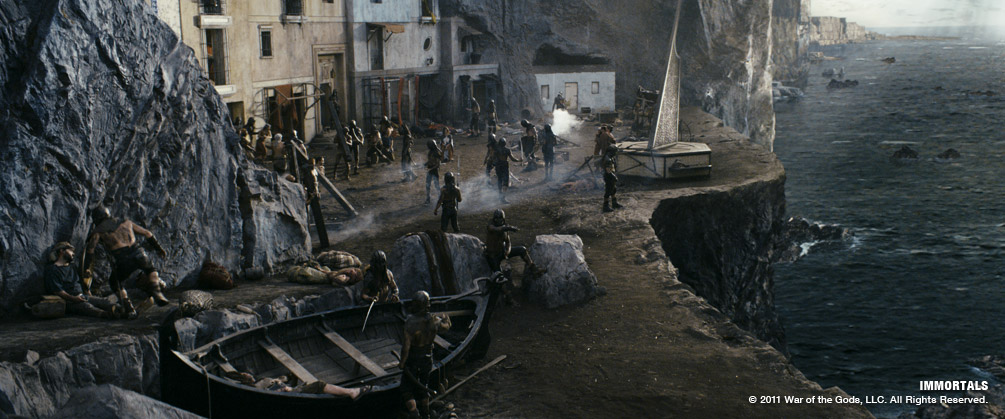
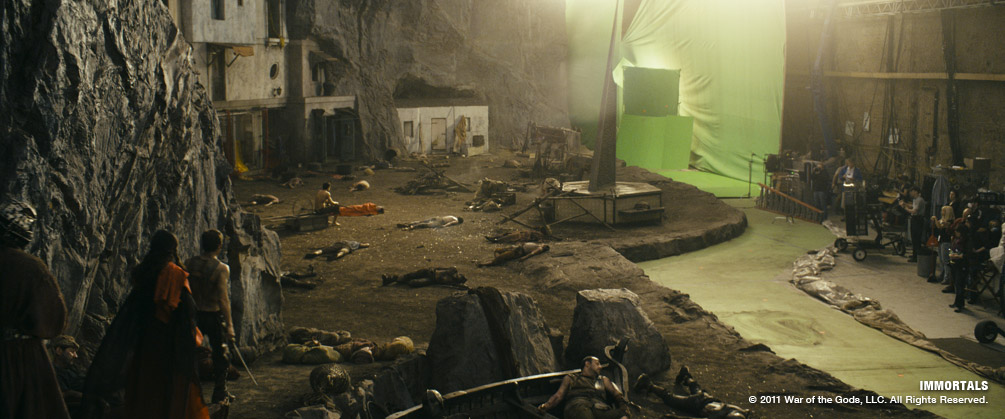
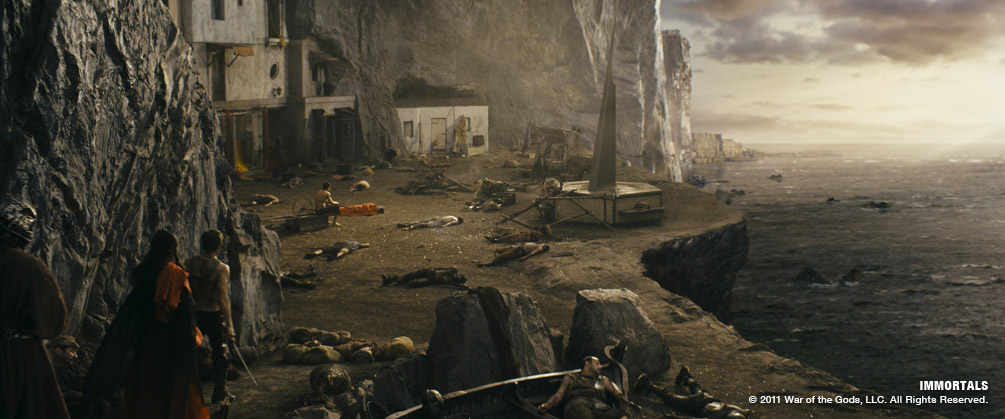
In the same environment, waves crashing on rocks, distant whitecaps, tidal bands and additional elements such as lens flares, birds, distant coastal islands completed the look and delivered visual cues for the emotional register of each scene.
To create the oceans, Image engine developed a system for generating gentle rippling water, which was then used for real reflections, with displacement.
All of this work is showcased to its fullest extent during a dramatic pullout shot which travels through the pupil of Athena’s eye. As this shot pulls out from the village it travels through clouds, overlooking the entire cliff and ocean. This necessitated an extended environment including a distant vista of mountainous terrain. The first plate was shot on a zoom lens, which had to transition out to a dolly, and then fly up into the heavens. Jordan Benwick, Lead Compositor, was responsible for coming up with the creative solutions to deal with the ensuing parallax, which affected everything from the details on set through to the clouds.
In this shot, 50% of the clouds were volumetric setups in NUKE, using a method devised by Benwick, alongside the giant hero thunderhead clouds, which were cooked up by Greg Massie in the fx dept, using Houdini. For the cloud setups in NUKE, a way of creating deformed and detailed cloud structures that could hold up to stereo conversion was also created.
WEAPONS
Alongside many other CG weapons, Image Engine was tasked with creating the effects that brought the Epirus Bow to life and showed its magical power. This included the way in which the arrow of the bow materialized and fired. The arrow effects were largely handled by treatments in NUKE that were applied to a CG arrow. To create additional force, power trails were also added, which disturbed the environment as they flew towards the gates. The FX simulations were created in Houdini and rendered in 3delight.
In the hero ‘fly-by’ shot, the camera follows the arrows fired by Theseus through the environment, before nailing their Heraklion target.
ARTFUL GORE
In addition to the weapons, CG limbs and arms were created where they are chopped off as Theseus fights his way through the battle scene towards King Hyperion, which involved significant digital gore.
As Walsh explained: “In many instances the kind of ‘artful gore’ that Tarsem was looking for in the final frames of the film was simply not possible to achieve within the shooting schedule. Image Engine was tasked with augmenting live action plates featuring all manner of violent events such as stabbing, spearing, decapitation, slashing, severing of limbs, etc. literally raining a fountain of digital blood and gore down on the film!”
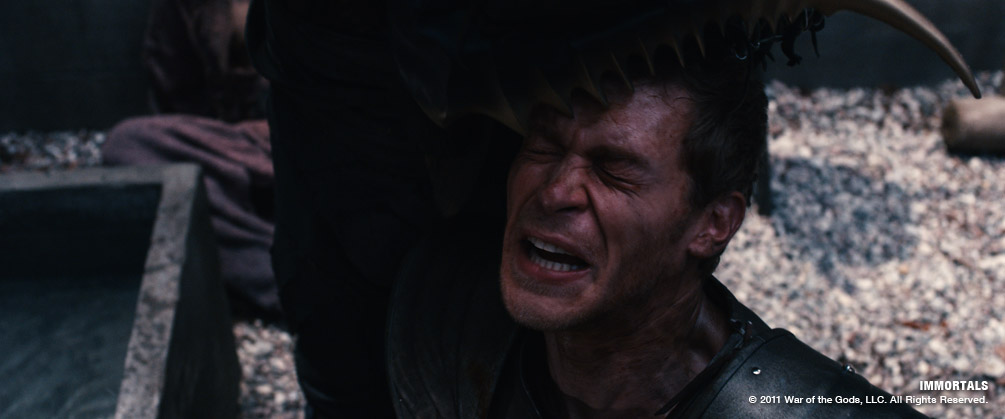

CHARACTERS & TRANSITIONS
What started as a simple request to have a bird flying in the distance of the cliff environment, ultimately evolved into the Hawk “character”, whose appearance helped to drive a story point. Image Engine created a fully CG Hawk which was seen up close in several shots.
Image Engine was also responsible for the ‘Athena reveal’. Here, the goddess Athena transitioned from being camouflaged into her true form by lifting her magical cloak, which revealed itself out of nothing in a cloud of gold dust. The goal was to create a fluid transform that looked like it was seeping into her body.
Hughes concluded: “Our best work for Immortals is largely within the environment but is also present in smaller details that we contributed throughout the film. Overall, this was challenging and rewarding show for everyone. I’d like to thank the crew, who tackled all the creative hurdles and came through in a big way for Immortals.”
DOWNLOAD PDF VERSION1.4Mb


